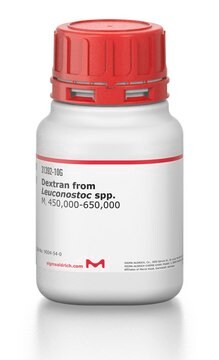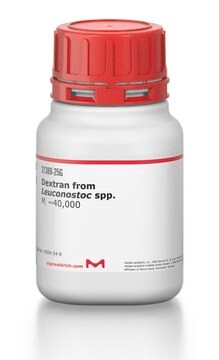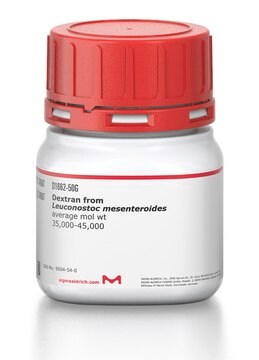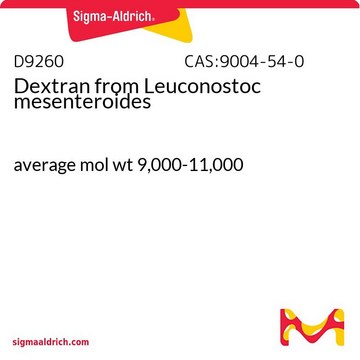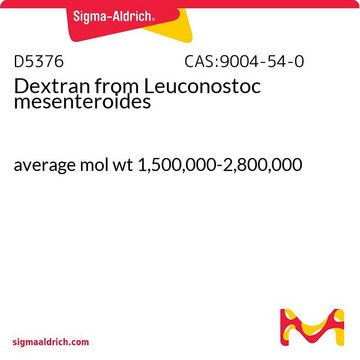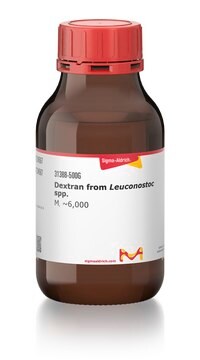D8821
Dextrane from Leuconostoc mesenteroides
average mol wt 60,000-76,000
About This Item
Produits recommandés
Source biologique
bacterial (Leuconostoc mesenteroides)
Forme
powder
Activité optique
[α]20/D 190 to 201 °, c = 2% (w/v) in water
Poids mol.
average mol wt 60,000-76,000
Couleur
white to off-white
Pf
483 °C ((901 °F ))
Solubilité
water: 100 mg/mL at 25 °C, colorless to faintly yellow
Température de stockage
2-8°C
InChI
1S/C18H32O16/c19-1-5(21)9(23)10(24)6(22)3-31-17-16(30)14(28)12(26)8(34-17)4-32-18-15(29)13(27)11(25)7(2-20)33-18/h1,5-18,20-30H,2-4H2
Clé InChI
FZWBNHMXJMCXLU-UHFFFAOYSA-N
Vous recherchez des produits similaires ? Visite Guide de comparaison des produits
Description générale
Application
- in resuspension of pellets and in Hanks′ balanced salt solution (HBSS) for the isolation of vascular nuclei from frozen post-mortem brain tissue
- to prepare dextran solution in phosphate buffer saline and to maintain corneal hydration and restore corneal thickness to physiological levels of human eyes
- as a polymer solution in the in situ aqueous two-phase systems (ATPS) formation with lysozyme PEGylation reaction
Actions biochimiques/physiologiques
Autres remarques
Code de la classe de stockage
11 - Combustible Solids
Classe de danger pour l'eau (WGK)
WGK 2
Certificats d'analyse (COA)
Recherchez un Certificats d'analyse (COA) en saisissant le numéro de lot du produit. Les numéros de lot figurent sur l'étiquette du produit après les mots "Lot" ou "Batch".
Déjà en possession de ce produit ?
Retrouvez la documentation relative aux produits que vous avez récemment achetés dans la Bibliothèque de documents.
Les clients ont également consulté
Notre équipe de scientifiques dispose d'une expérience dans tous les secteurs de la recherche, notamment en sciences de la vie, science des matériaux, synthèse chimique, chromatographie, analyse et dans de nombreux autres domaines..
Contacter notre Service technique